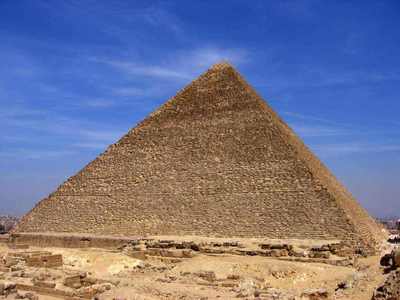Great Pyramid of Giza

The image above shows the Great Pyramid of Giza, which can be regarded as a square pyramid.
If a square whose side length is the height of the pyramid has the same area as one of the triangles of the pyramid, what is the ratio of the height of the one of the triangles of the pyramid to the side length of the bottom square of the pyramid?
Source: Gaokao 2020, I
This section requires Javascript.
You are seeing this because something didn't load right. We suggest you, (a) try
refreshing the page, (b) enabling javascript if it is disabled on your browser and,
finally, (c)
loading the
non-javascript version of this page
. We're sorry about the hassle.
Let the side of the square base be b , the height of the pyramid h , and the height of one of the triangles s ; let x = b s be the ratio we're after.
b , h , s are related by h 2 = s 2 − 4 b 2 .
The area of one of the triangular faces is 2 1 b s , so from the given condition, h 2 s 2 − 4 b 2 4 s 2 − b 2 4 x 2 − 1 4 x 2 − 2 x − 1 = 2 1 b s = 2 1 b s = 2 b s = 2 x = 0
The solutions of this quadratic are x = 4 1 ± 5 . We of course want the positive root; so the answer is x = 4 1 + 5 .